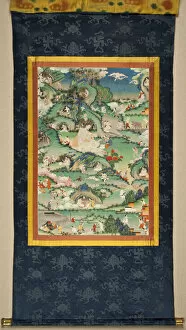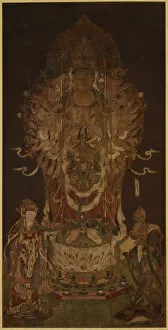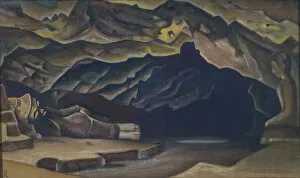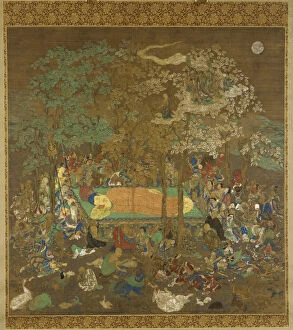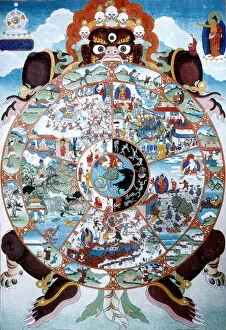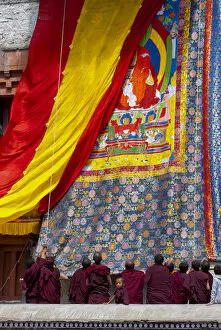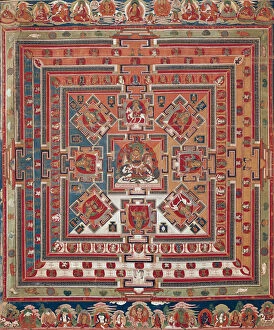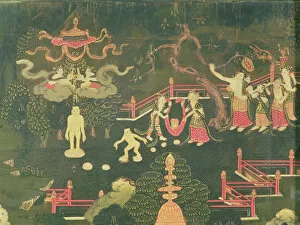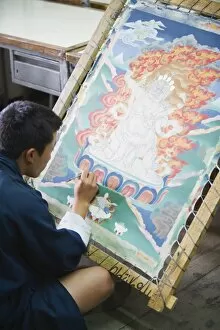Thangka Collection (#3)
Thangka, a traditional form of Tibetan Buddhist art, is a captivating glimpse into the rich cultural heritage of Bhaktapur, Nepal in Asia
For sale as Licensed Images
Choose your image, Select your licence and Download the media
Thangka, a traditional form of Tibetan Buddhist art, is a captivating glimpse into the rich cultural heritage of Bhaktapur, Nepal in Asia. These intricate and vibrant paintings are not just mere artworks but hold deep spiritual significance. One such thangka showcases a mesmerizing mandala, intricately painted on cloth. The mandala represents the universe and serves as a visual aid for meditation. Its symmetrical patterns and vivid colors transport viewers to a realm of tranquility and enlightenment. In another thangka painting from Bhaktapur, we witness Sujata offering milk rice to Buddha. This depiction beautifully captures the compassionate act that led Siddhartha Gautama towards his path to enlightenment. The attention to detail in this piece is awe-inspiring, showcasing the artist's skillful brushstrokes. Dating back centuries ago, an ancient thangka portrays Padmasambhava - an important figure in Tibetan Buddhism who introduced its teachings to Tibet during the 8th century AD. This painted cloth artwork carries with it historical significance while also displaying remarkable artistic talent. The blessings bestowed by Buddha are depicted in yet another exquisite thangka from Kathmandu. With delicate strokes and vibrant hues, this painting captures the essence of compassion and serenity emanating from Buddha's presence. Amoghasiddhi, known as the Buddha of Northern Pure Land, comes alive through an enigmatic thangka created by an unknown artist during ca. 1200-50 AD. The meticulous details bring forth Amoghasiddhi's divine aura while inviting viewers into his sacred realm. Vajrasattva emerges from early 19th-century Tibetan culture through their artistic expression on canvas-like cloth called thangkas. Vajrasattva symbolizes purity and acts as a guide towards spiritual purification for practitioners seeking enlightenment. Kalachakra graces another stunning Bhaktapur thangka with its representation of the wheel of time.



